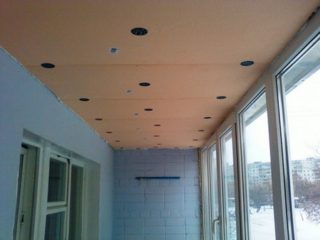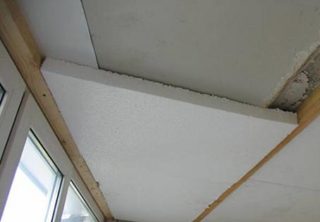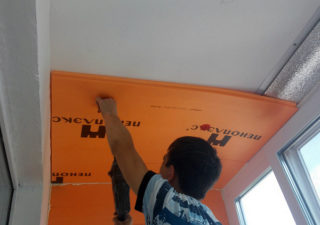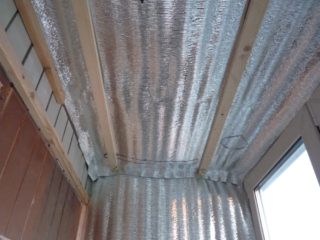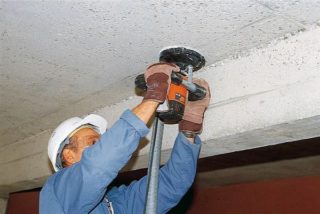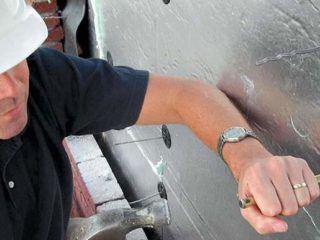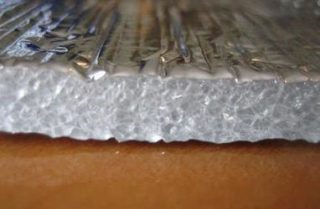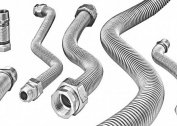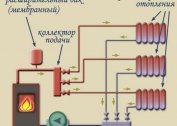The balcony and loggia are unheated rooms, so they are rarely used as a place to relax. So that a person can feel comfortable on the balcony all year round, they do insulation. It is important to pay attention to the thermal insulation of the ceiling, as heated air moves up. During operation, you need to be able to choose materials, calculate their quantity and comply with installation technology.
Choice of insulation
Whether it is necessary to insulate the ceiling on the loggia or balcony, depends on the use of the room. If it is a place to store things, you can not do insulation. If the owner wants to make a workplace or a recreation area from the balcony, the room should be insulated.
There are various thermal insulation materials. They differ in composition, structure, thermal conductivity and other properties. For ceiling insulation, mainly used:
- mineral wool;
- Styrofoam;
- penoplex;
- foil polyethylene.
All of them have their positive and negative sides, as well as operating conditions.
Minvata
Mineral wool is usually used as an intermediate layer between the ceiling facing material. Installed using beams that create cells. The laying thickness is 2-20 cm, depending on the required degree of thermal insulation.
There are different types of mineral wool. It can be made of glass melt, volcanic rocks (stone wool) or blast furnace slag. The advantages of mineral wool include:
- cost;
- high level of thermal insulation;
- sound insulation;
- ease of installation.
Cons are the following:
- absorbs moisture, a layer of waterproofing is required;
- heavy weight;
- toxicity.
Mineral wool, due to its shortcomings, is replaced by other modern heaters.
Styrofoam
Refers to budget and effective materials for thermal insulation. It is based on special plastic. Stacked under a layer of putty or decorative panels.
Main advantages:
- soundproofing;
- low cost;
- light weight, lightening the load on the crate;
- environmental friendliness and safety for humans;
- universality;
- can be installed on balconies located on any floor.
Disadvantages:
- fragility;
- risk of ignition;
- vulnerable to strong chemicals such as acetone.
If you need to make insulation with minimal cost, polystyrene is one of the best options.
Penoplex
Expanded polystyrene or polystyrene is a modern material that can be used on various surfaces. It is an advanced foam.
Benefits:
- good thermal insulation, which is achieved with a small (5-7 cm) layer;
- waterproofing properties;
- duration of operation;
- ease of installation;
- light weight;
- elasticity;
- strength.
Of the minuses, one can note a higher cost than the foam, and a low level of fire safety.
Penofol
Foiled polyethylene or penofol is thermally bonded to each other with a metal film and insulation. A metallized surface is used to reflect heat inside the room.
Pros:
- reliably retains heat;
- high degree of waterproofing;
- noise suppression;
- safety for health, since it does not contain and does not emit toxic substances;
- durability;
- small thickness.
It also has a higher cost than budgetary heaters.
Step-by-step algorithm for ceiling insulation on the balcony
Thermal insulation of the ceiling is not difficult even for beginners. As a heater, penoplex with penofol will be used. This is the best way to insulate the ceiling and walls on the balcony.
To insulate the ceiling of the loggia you will need:
- heaters (penoplex and penofol);
- bars;
- dowels;
- stapler;
- polyurethane foam;
- building level;
- knife;
- screwdriver;
- hammer drill.
After preparing the tools and materials, you can begin to work.
In order for insulation to be of high quality and reliable, it is necessary to prepare the surface of the ceiling. To do this, the decorative design is removed, the surface is cleaned of dirt and dust. You can also process the balcony ceiling with a grinder.
Installation work
Step-by-step instructions for warming the ceiling on the balcony:
- Ceiling Width Measurement. According to the obtained values, it is necessary to cut the segments on the foam sheet using a construction knife.
- Drilling segments for mounting on the ceiling.
- Fixation of insulation.
- Sealing with foam of joints between the sheets of foam and the wall of the balcony.
- Installation of penofol. It is fixed on a construction stapler.
- Create a crate. Usually it is made of wooden blocks 3 × 3 cm in cross section. They provide a ventilation gap between the insulating material and the finish through which moisture is removed.
Further, finishing work and laying of the cladding on the crate are carried out. As the finishing material can be a PVC panel, lining, drywall.
Thermal insulation of the last floor
In the case of insulation of the ceiling from the inside on the upper floor, it is important to pay special attention to waterproofing. Penofol is always placed under the foam, which retains heat and provides protection from moisture. If you do not install a waterproofing layer, the ceiling will leak during precipitation.
On the remaining floors, penofol prevents the formation of condensate - in fact it is a vapor barrier. Otherwise, dampness may appear in the insulation, contributing to the growth of harmful bacteria.
Insulating the ceiling on a balcony or loggia is a simple process in which you need to pay attention to details. It is necessary to choose the right materials, determine the need for steam and waterproofing, and process joints. The service life and effectiveness of thermal insulation depend on such trifles.
It also insulates floors, walls, windows and doorways through which heat can escape.
